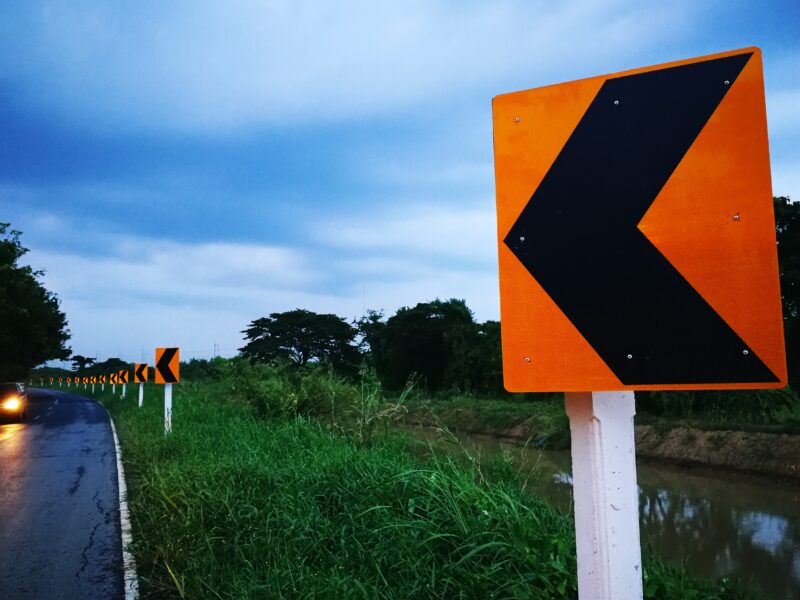
When the sun goes down, road safety becomes even more crucial.
Whether you’re driving on a national highway or a city bypass, poor visibility at night can significantly increase the risk of accidents. According to the Ministry of Road Transport and Highways, a large percentage of fatal road crashes occur during night-time due to limited visibility, poor road conditions, and lack of adequate signage.
So, how do we make our roads safer when visibility is low? The answer lies in a powerful yet passive innovation — reflective technology.
From glowing road studs to high-visibility signboards, reflective materials play a silent but essential role in guiding drivers safely at night.
In this blog, we explore how reflective technology is transforming road safety after dark, and why it should be a top priority for infrastructure planners.
What Is Reflective Technology?
Reflective technology refers to the use of retroreflective materials that bounce back light toward its source — typically vehicle headlights. These materials are engineered to work in low-light conditions, ensuring that critical road elements are visible even in the absence of streetlights.
You’ll see reflective tech used in:
- Road signboards
- Lane markings and dividers
- Crash barriers and guardrails
- Traffic cones and barricades
- Pedestrian crossings and turn indicators
Unlike lighting systems that require power, reflective solutions work passively — using existing light sources to do their job.
Why Night-Time Safety Needs Special Attention
Driving at night is a completely different experience. Human vision is naturally limited in the dark, and even well-lit roads don’t offer the clarity of daylight.
Here’s what changes at night:
- Reduced depth perception
- Lower peripheral awareness
- Slower reaction times
- Difficulty recognizing signs or hazards
All these factors make it harder for drivers to stay alert and respond in time.
Reflective technology helps solve this problem by making sure the right visual cues are visible at the right time — warning signs, sharp turns, dividers, speed breakers, pedestrian crossings, and more.
Types of Reflective Materials Used in Road Safety
Reflective products come in different grades and forms depending on where and how they are used. Some common types include:
1. Retroreflective Sheeting (Signboards)
- High-Intensity Prismatic (HIP) & Diamond Grade (DG)
- Used in directional, cautionary, and mandatory signs
2. Thermoplastic Paint with Glass Beads
- Used for lane lines, arrows, pedestrian crossings
- Reflects light from headlights, visible from long distances
3. Reflective Road Studs
- Installed on medians and curves
- Available in solar and passive variants
4. Reflective Tapes & Panels
- Applied to cones, guardrails, barriers, safety jackets
- Helps in alerting and directing traffic at work zones
Key Benefits of Reflective Technology
Implementing reflective products offers a wide range of advantages for both commuters and civic planners. These include:
- Improved Visibility: Signage and road elements remain visible up to 500 meters away
- Early Hazard Detection: Drivers can react in time to curves, diversions, and obstructions
- Support in Unlit Areas: Crucial for rural and underdeveloped stretches
- Low Maintenance: No electricity or continuous supervision required
- Weather Resilience: Performs even in rain, fog, or dusty environments
Real-Life Applications Across India
India has already started integrating reflective technology across major projects. From the Delhi-Mumbai Expressway to Smart City zones, these materials are becoming a part of the road engineering DNA.
You’ll find reflective products being used in:
- National and State Highways
- Expressways
- Bridge Approaches
- Work Zones
- Tunnel Exits
- Hilly Roads with Sharp Curves
Reflective signboards are now a mandate in most government tenders for highway construction and maintenance.
How Reflective Signage Is Built to Last
At SKYK, reflective signage isn’t just about visibility — it’s about durability and reliability under real road conditions.
Each board or product is built using:
- UV-resistant films to reduce fading over time
- Corrosion-resistant substrates like aluminium or galvanized steel
- High-strength adhesives for long-term performance
- Overlays to resist dust, rain, and impact
- IRC and BIS-compliant retroreflective grades (HIP, DG)
These engineering standards ensure that every reflective product continues to perform — day and night — across seasons and terrain.
Government Regulations and BIS Standards
Reflective technology isn’t just a best practice — it’s a mandatory requirement in public infrastructure projects.
Under Indian Road Congress (IRC-67) guidelines and BIS standards:
- Road signs must be made using retroreflective sheeting
- Road markings should have glass bead thermoplastic paint
- Only BIS-approved materials (IS 17020:2018) can be used in government tenders
- Projects must clearly define the reflective grade based on speed and road type
This ensures consistency and safety across all infrastructure developments.
Final Thoughts
Reflective technology is one of the simplest, most cost-effective ways to improve road safety — especially when the lights go out. It doesn’t just guide — it protects, informs, and helps save lives every single night.
As India builds its next generation of roads, integrating reflective safety solutions should be non-negotiable. It’s a small investment that makes a big difference — for visibility, for safety, and for the future of our highways.
Ready to Make Your Roads Smarter and Safer?
Let’s talk. Whether you’re planning a highway, a smart city zone, or an urban flyover — SKYK can help you integrate durable, regulation-compliant reflective solutions into your project.
